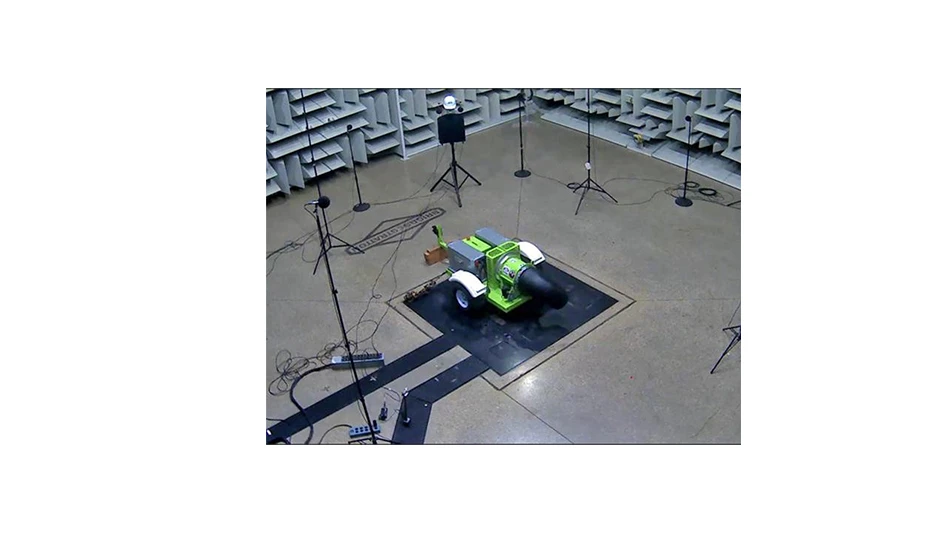 Superintendents who have used Nemacur to conquer their nematode issues no doubt shed a tear when the EPA banned it and began a three-year phase-out after a few applications too close to water bodies resulted in fish kills.
Superintendents who have used Nemacur to conquer their nematode issues no doubt shed a tear when the EPA banned it and began a three-year phase-out after a few applications too close to water bodies resulted in fish kills.
While existing supplies must be used by Oct. 6, alternatives have cropped up, creating a new generation of products to manage these pests.
Most experts, though, agree these products force superintendents to change their mindset, since they lack Nemacur’s residual control. And none are considered a “silver bullet” capable of wiping out nematodes on their own. Rather, they’re effective tools when used in a comprehensive program.
William T. (Billy) Crow, landscape nematologist at the University of Florida, has been researching new nematode management options since 2000. One product he has found success with is Nortica, a biological from Bayer Environmental Science.
“I’ve had the best success with it as a seasonal preventative product,” Crow says. “It’s not good if you have a big nematode problem and it’s June or July – it won’t fix it. But if you put it out earlier, it will help prevent nematode problems during this stress period. I’ve done a lot of trials with it over the last four to five years, and we consistently got improved root production applying it at the right times. And that’s key for it to work well – applying it in early spring and early fall.”
Joe Steinlage, insecticide business manager for Bayer, says Nortica reflects Bayer’s approach to nematode control. “We are more at a management stage of nematodes than we were with Nemacur or even Curfew to an extent, where Curfew can crash nematode numbers,” he says. “What we’re now trying to do with these biologicals is protect the root zone in the presence of nematodes, as Nortica colonizes on fresh root growth and protects from nematodes feeding on the root tissue. None of these new products will be as harsh as Nemacur or Curfew, so we’re trying to figure out how to incorporate the softer tools we have into a long-term solution.”
|
Nematodes: No Longer Just a Southeast Problem? Nematodes have traditionally been a common problem in the Southern/Southeastern United States, but they apparently are becoming more of a nuisance in the Northern U.S., even Canada, says Rob Golembiewski, Ph.D., Bayer Green Solutions Team. Why? It’s not like they just miraculously appeared – they have always been there. But Golembiewski has a theory. “A lot of it has to do with some of the heavier metal-type products used years ago and the residual activity on those. Even some of the older, harsher insecticides may have had an impact on nematodes,” he says. “In my mind, in the northern tier, nematodes are becoming a stress no different than heat, drought or disease, and superintendents need to be aware of it.” Golembiewski relates that as Bayer made its product available in the north last year, superintendents remarked that they didn’t have a nematode problem. But by the end of last year, as he revisited those regions, a number of superintendents said they had thin turf that never fully responded to management programs and found they had nematodes after testing. Golembiewski then recommended a dual approach to these superintendents for controlling nematodes. “You need to look at something that might have more of a knockdown effect if, in fact, you’re not on a preventative program. You will have to look at something that will at least arrest or put nematodes in check, but then also look at other biological products that can be incorporated into a regular management program.” After making their product available in the north last year, Golembiewski claims that while superintendents didn’t apply it as early as they would have liked, they saw “phenomenal” response. “One hundred percent of those who followed our guidelines said they intended to use the product again this year,” he says. “Superintendents who are being proactive and getting out in front of this and incorporating these biological agents in their regular management programs are more likely to see success this season.” |
Crow advises superintendents who have had a history of nematode issues to apply a product like Nortica before the pests get active, stating the bacteria it contains produces metabolites that affect nematodes in different ways but mostly protect the turfgrass root system.
“We have a number of more seasonal trials we’ve been conducting, but we’ve also been doing some longer term trials and getting really nice nematode suppression over a period of years,” Crow says.
Nortica will not offer a “quick fix” with significant short-term results. “People like to put something out, take a nematode sample and say, ‘Well, the nematodes are gone.’ But this product doesn’t work that way,” Crow says. “It prevents the nematodes from feeding, and over time they’ll start decreasing, but you won’t see a big, immediate kill. In our trials, we consistently got improved root systems and, in the longer term, nematode suppression.”
When developing a nematode IPM program, Crow considers Nortica a foundational thing to do. “You put this out and help prevent nematode problems from developing later,” he says. “But you do have to use it more preventively. For everything we’ve done, when you put it out in the nematode stress period in summer, it doesn’t work that well.”
Syngenta’s Avid is another product Crow has found success with, although it is not labeled for every state. In states where Avid can be legally used, it does well on putting greens, he says. Its active ingredient is found in a number of insecticides, but it also works well as a nematicide. However, it doesn’t move well in soil, and is one of the reasons it had never been used to control nematodes in the past, Crow says.
“Syngenta started using it as a treatment for crop seeds, where it would coat the seed and protect the germinating seed for a period of time and let the plant get a jump on nematodes,” Crow says. “But I’ve been getting good results on Bermuda greens in Florida in controlling nematodes in the top two inches of the soil. It doesn’t do much for nematodes that are down deeper than that.”
Avid should be mixed with a wetting agent and watered into the soil immediately after application, says Lane Tredway, Syngenta’s southeast technical manager.
“When we do that, we can get it down into the profile, nevertheless most of the nematode activity lies in the top inch or two of the profile,” Tredway says. “That’s where the majority of turfgrass roots are concentrated in the first place.”
Unlike Nortica, which is a preventative, Avid works well in summer stress periods. Crow recommends applying it when nematodes are at their worst.
“I do recommend applying it with a good soil penetrant to help it move through the thatch and get into the soil,” he says. “But even with that, most will get caught up in the thatch and not much will get down into the soil. That’s why we have to apply it at a high rate compared to what’s used for controlling insects.”
Crow recommends four sequential applications at two- to three-week intervals where enough of it can get down into the soil to control nematodes in the top two inches. Because of this, it will likely only control root knot nematodes as they tend to stay in the top of the soil, but when July and August arrive and stinging nematodes go deeper into the soil, Avid won’t work as well.
Avid is a product naturally derived from soil microorganisms and is permitted for usage in 16 states. The label recommends usage in two- to three-week intervals. Avid is legal in Florida as a restricted-use pesticide and must be purchased as part of the Avid and Heritage Multipak.
“It’s a unique product,” Tredway says. “It’s very safe for the environment and has a very good environmental toxicology profile. At the same time, it’s very potent against nematodes. It gives superintendents another tool to combat them. It is best used as a preventative, when nematode populations are low to keep them suppressed in the root system.”
For something that does work deeper in the soil, Crow recommends MultiGuard Protect, a nematicide that contains furfural, a byproduct of sugar processing. “It’s not water soluble, but the trick with the MultiGuard formulation is they’ve been able to get it to go into an emulsifiable suspension that you can get into water to apply it and get it down into the soil,” he says.
Brandon Green, a technical specialist for Agriguard, supplier of MultiGuard Protect, says the product is a contact nematicide. “When MultiGuard, active ingredient furfural, comes into contact with the nematode, it quickly begins to breakdown the cuticle layer,” he says. “Cuticle degradation from furfural is the primary effect. The secondary effects that follow include reduced nematode respiration, movement, reproduction, and dehydration. Ultimately resulting in mortality and thus allowing the treated turfgrass to recover root mass and canopy density.”
Unlike Avid, MultiGuard Protect tends to work better deeper in the soil. According to Crow, a single application won’t do much, so several applications spaced at three-week intervals will generate better results.
 “It’s not the most consistent product, and if it’s not applied properly, you can have some phytotoxicity with it, so I encourage superintendents to play with it a little on a nursery to get familiar with how to use it,” Crow says.
“It’s not the most consistent product, and if it’s not applied properly, you can have some phytotoxicity with it, so I encourage superintendents to play with it a little on a nursery to get familiar with how to use it,” Crow says.
Pre-wet the treatment area, about a ∑ inch, then don’t irrigate again for 24 hours, Crow says. And don’t put it out before a big rain because additional water will dilute the material.
“It has worked well for us in numerous trials,” he says. “But again, it’s not the most consistent product. In some situations, it works well, and in others, not so well.”
Since the loss of Nemacur, Green says no products have been introduced that do not have inconsistencies. Accurate pre- and post-irrigation is “absolutely vital” to success. “One application doesn’t quite provide season-long control,” he says. “MultiGuard Protect requires more of a program-based approach. This is why we recommend three applications in spring and three in the fall, with applications being three weeks apart.”
Ultimately, it comes down to where you’re at, what nematodes you have and what they’re doing, which is something Crow and his team are focusing on right now in their trials.“We’re trying to see what the nematodes that we’re trying to control are doing, and then use the products that work in that time of year on those particular nematodes,” he says. “It’s not just one thing that works best all the time.”
 Crow is concluding a three-year, USGA-funded trial examining calendar-based IPM programs where Nortica was applied in late winter, MultiGuard in spring and Avid in fall. So far, he says the approach is yielding excellent results.
Crow is concluding a three-year, USGA-funded trial examining calendar-based IPM programs where Nortica was applied in late winter, MultiGuard in spring and Avid in fall. So far, he says the approach is yielding excellent results.
New products are forcing superintendents to alter their thinking, says Rob Golembiewski, Ph.D., Bayer Green Solutions Team. “None of these new generation products will have the soil residual activity Nemacur used to have, which means you’ll have to make multiple applications or continue to reapply if you want to suppress, manage or control the nematodes to some extent. It’s really about changing the mind-set of what superintendents used to do based on what these new generation control options can do. They will have to be part of a regular, ongoing agronomic program, no different than what you would do for diseases or other turf pests.”
Jason Stahl is a Cleveland-based writer. GCI’s Guy Cipriano contributed to this article.
WANT MORE?
Enter your email to receive our newsletters.

Explore the June 2014 Issue
Check out more from this issue and find your next story to read.
Latest from Golf Course Industry
- Bloom Golf Partners adds HR expert
- Seeking sustainability in Vietnam
- Kerns featured in Envu root diseases webinar
- Toro continues support of National Mayor’s Challenge for Water Conservation
- A different kind of long distance
- Golf Construction Conversations: Stephen Hope
- EnP welcomes new sales manager
- DLF opening centers in Oregon, Ontario





